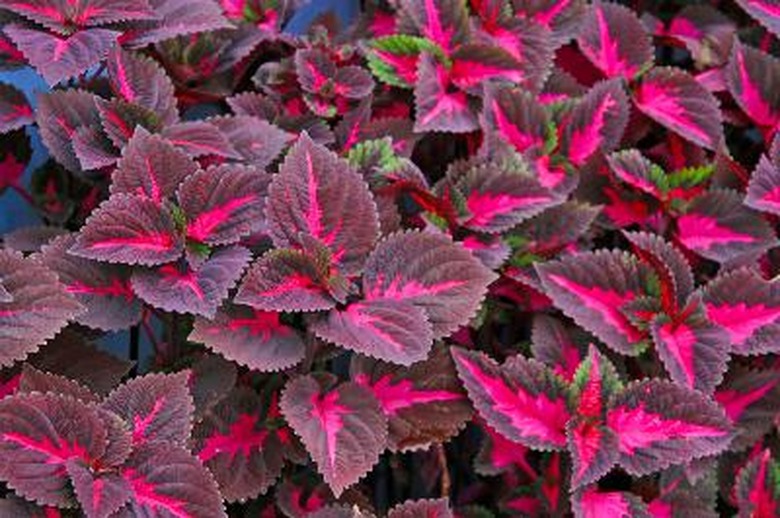Are All Plants Green?
All plants which use the process of photosynthesis to produce energy have chlorophyll. The chlorophyll is what makes the plant look green. Other substances besides chlorophyll exist in the plant and help the process of photosynthesis. These substances reflect back other colors of light. Usually the color is masked from being visible by the green of the chlorophyll but not always, which is why not all plants are green.
Photosynthesis
Photosynthesis may be considered the basis of all life. It is the combination of water molecules with carbon dioxide molecules in the presence of sunlight producing glucose, a sugar used for energy by the plant. Oxygen is released when the glucose is produced. The chlorophyll is pigmented and absorbs the visible blue and red-violet light of sunlight and reflects back the yellow and green light which is why the plant looks green. The exact formula for photosynthesis is six molecules each of carbon dioxide — CO2 and water — H20 producing 1 molecule of glucose — C6H12O6 and releasing six molecules of oxygen — O2.
- All plants which use the process of photosynthesis to produce energy have chlorophyll.
- Other substances besides chlorophyll exist in the plant and help the process of photosynthesis.
Purples and Black
Black leaves are not truly black but either a deep burgundy — red or deep purple. Taro has deep purple leaves and prefers a shady moist location. It is a tropical plant so it won't tolerate frost. The root of the green taro is used in tropical cuisines much the way potatoes are used. Oxalis is another plant with deep purple leaves. The flowers are small in pink, yellow and white. It is somewhat an invasive plant.
- Black leaves are not truly black but either a deep burgundy — red or deep purple.
Reds and Pinks
Red leaves may be an attempt by the plant to protect it from ultraviolet light. New shoots on normally green plants such as roses, are a deep red. Caladiums have leaves with green as well as bright pink and deep pink. Canna another tropical plant has leaves that are maroon edged or variegated with other colors such as orange and green. The plant grows to 5 feet high and blooms in white, yellow, red and bright orange. Coleus has insignificant tiny white flowers but brightly colors leaves in red, pink, pinks, purples and maroon. It's an annual growing to 3 feet high. It roots easily in water.
- Red leaves may be an attempt by the plant to protect it from ultraviolet light.
- The plant grows to 5 feet high and blooms in white, yellow, red and bright orange.
Yellow, White and Gray
Ivy, caladiums, coleus, vinca, diffenbachia, pothos and many other plants have leaves that are yellow and white, white and green or all three colors. Gray leaved plants such as lamb's ear, Russian sage and artemesia aren't truly gray but are a gray green color.
References
- Bay Nature; Photosynthesis in Leaves That Aren't Green; Michael Ellis; July 2008
- "At Home in the Garden"; Becke Davis; 2001
- "Garden Ideas"; Carol Spier et al.; 1996
